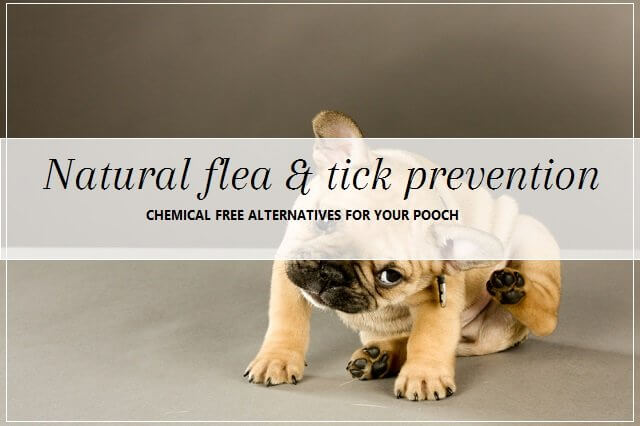A lot of people are reluctant to use over the counter chemical flea and tick treatments with good reason. In addition to some dogs having negative reactions to these treatments such as dermatitis, vomiting, diarrhoea, dry skin, and itchiness, chemicals in these products can also have adverse reactions in humans.
When choosing a treatment you should always check the label and make sure the product does not contain organophosphate insecticides, pyrethroids, chlorpyrifos, dichlorvos, phosmet or diazinon. These compounds have been linked to side effects such as brain damage, heart attack and seizures in dogs.
As our immune-compromised, elderly, young, and sensitive canine companions are all at risk from exposure to chemicals an effective alternative is to source a more natural way to protect them against fleas and ticks. Unless you have a full blown flea infestation these alternative natural methods can help your canine companion prevent and combat against these unwanted visitors.
- Regular bathing
Fleas do not grasp onto the hair shafts so they fall off in water and drown. A deep cleansing bath using a gentle shampoo will wash away most if not all fleas on your dog. Combine with thorough and regular brushing and you have an effective routine of helping rid your pet of fleas.
- Essential Oils
Ticks are vectors of infectious diseases as they carry dangerous bacteria that can result in Lymes disease and ehrlichioses. So repelling them is a priority for the health of your dog. Essential oils have been used for centuries to repel parasites. Fleas and ticks are most effectively repelled by different essential oils but unfortunately the combination of all of these oils in one solution does not smell that great. So if you need to repel both ticks and fleas it’s recommended you apply one solution blend in the morning and the other in the afternoon to avoid over application. Click here for details of our Natural Flea & Tick Prevention Treatment.
- Maintain a clean home
Regular vacuuming, laundering and disinfecting the floor and your dog’s living space with pet safe products will help to control the population of fleas. In the garden, you might consider adding a natural predator of fleas. Nematodes are small worms that feed off of flea larva and are easy to find at garden centres However make sure the nematode you choose is termed a “beneficial” nematode and is not the type that is known for infecting animals with heartworm. Also, make sure you cut your grass regularly as ticks love tall grass.
- Care on walks
Ticks hang out in tall grass and grab on to passers-by when they feel body warmth. If you walk your dog in wooded or grassy areas you should inspect your dog after every walk to ensure they have not picked up any ticks. Use a repelling spray to aid protection, and if you live in a particularly problematic area you can use cover-up clothing for your dog to avoid ticks latching onto their hair.
For more information on the essential oils blends mentioned above or if you have any questions about natural flea and tick prevention please feel free to contact us.

